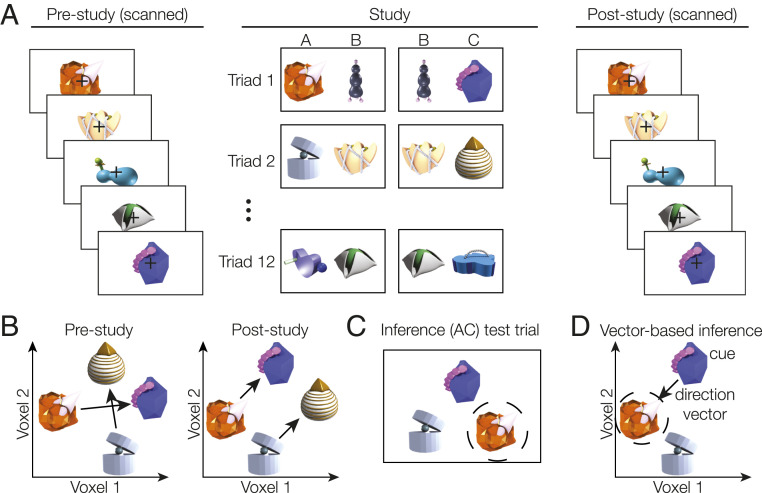Fig. 1.
(A) Participants learned associations between pairs of objects during the study phase. Unbeknownst to participants, objects were organized into triads of A, B, and C items. Within each triad of objects, an initial pair (AB) was learned first, followed by an overlapping (BC) pair. The left/right position of objects on the screen was randomized across presentations. Triads were learned in either a blocked order, for which all AB pairs were learned first followed by the BC pairs, or an intermixed condition, wherein AB and BC pairs were intermixed. Before and after learning, participants viewed each object in isolation, allowing us to measure how neural object representations changed as a result of learning. (B) We hypothesized that learning would cause items to become organized within a common cross-triad geometry, with a consistent direction between A and C items for all triads. (C) After scanning, participants performed an inference test; they were cued with a C item and asked to choose the A item that shared an indirect relationship with the cue. (D) We predicted that a common neural geometry across triads would support a vector-based inference process. The cue item representation could be combined with the direction vector representing the relevant relationship (here, C to A) to target the correct item in memory.

